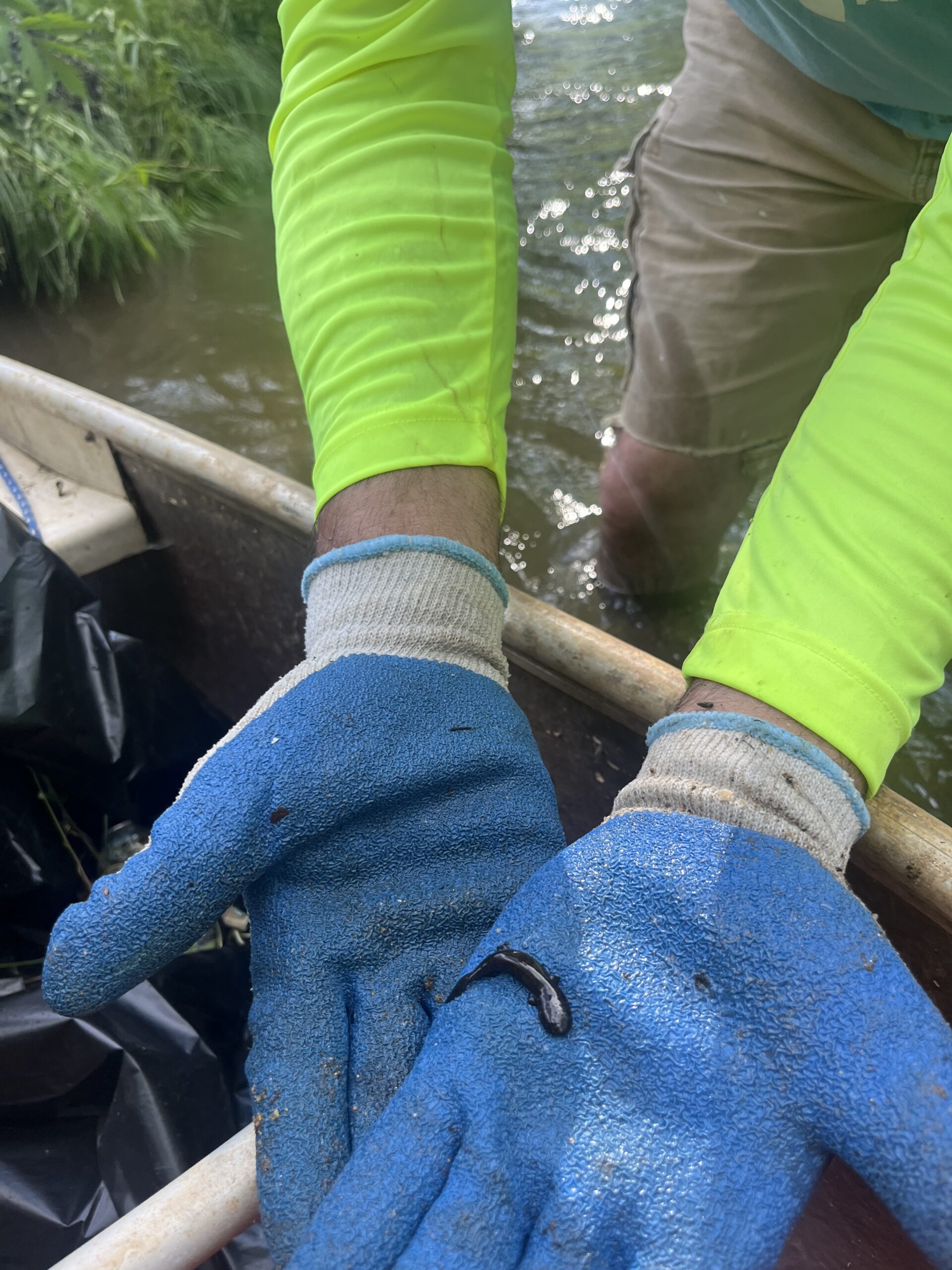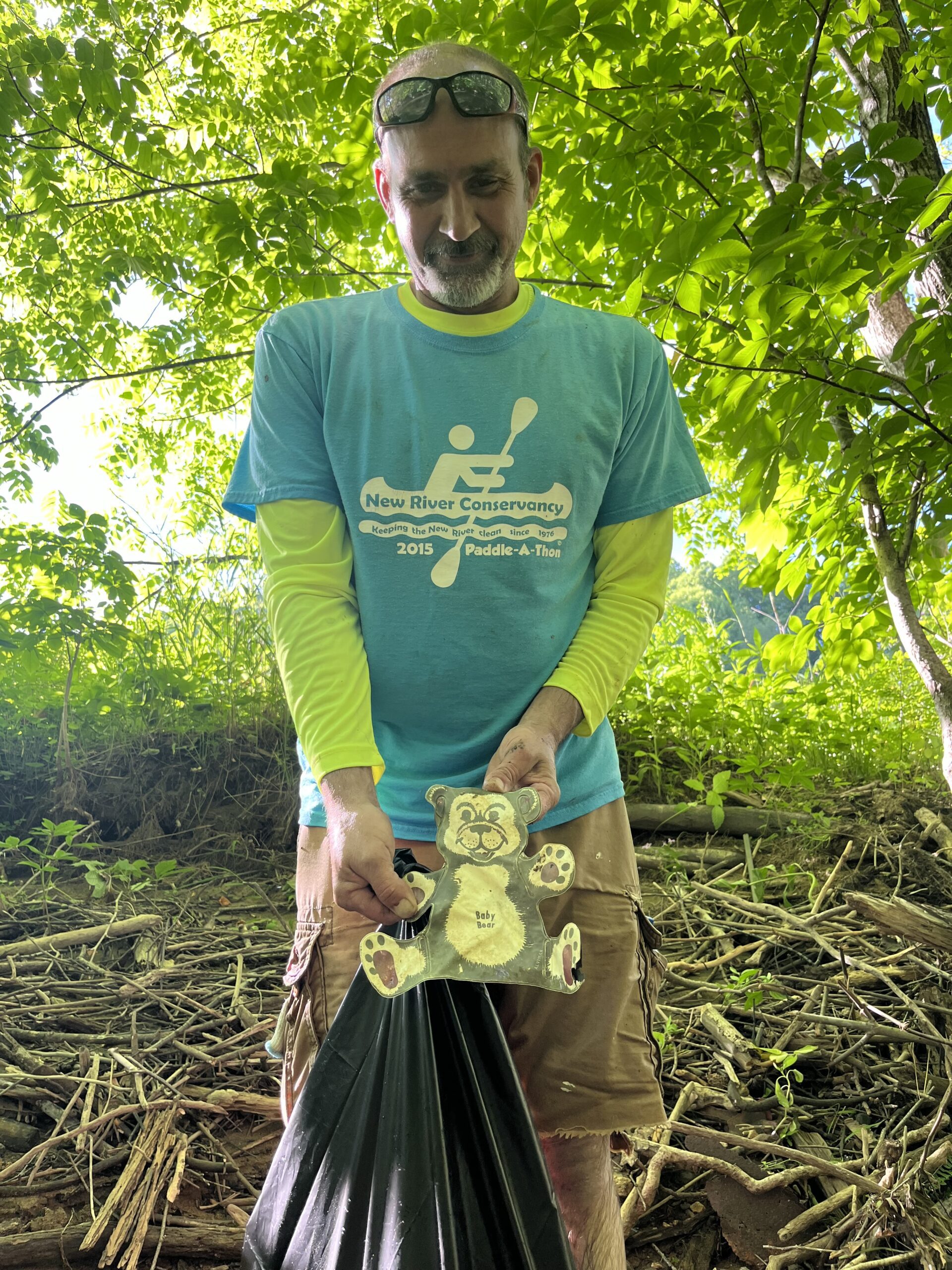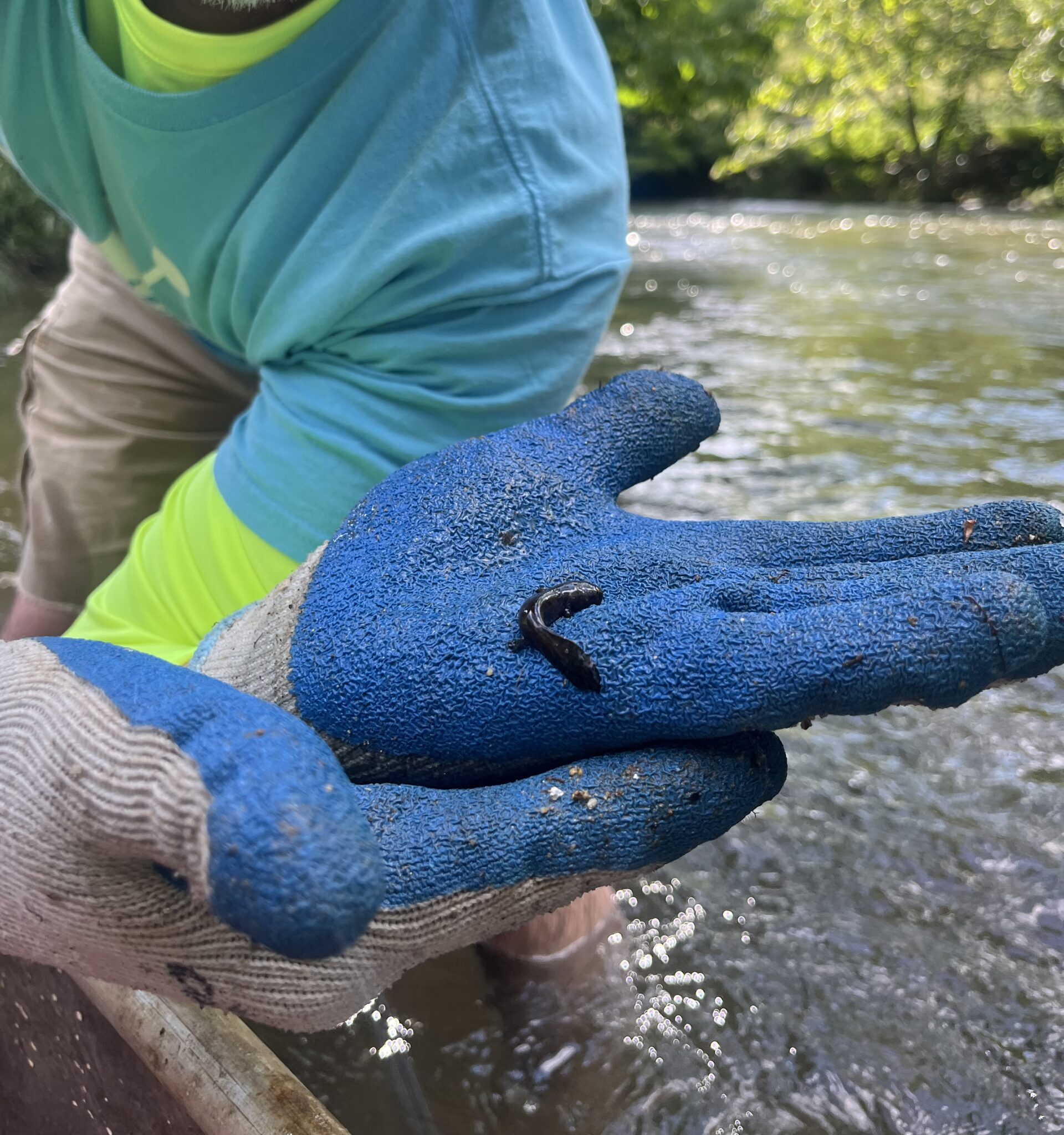In early June, NRC hosted a river clean up on the North Fork of the New River as part of the Water Cycle event. One of the volunteers, Jon Parker, discovered a tiny creature amidst trash he was hauling out of the New. Stella Cybulski, NRC Operations Coordinator and staff lead for the clean up, says “While pulling out a piece of metal, Jon found a small little creature! We were both in shock, but understood the importance of documenting the little hellbender so we could report it to the NC Wildlife Resources Commission.” Cybulski then sent photos and a map of location to Lori Williams, North Carolina Wildlife Resources Commission Wildlife Diversity Biologist. Williams responded “Definitely a larval hellbender. Well done!” A larval hellbender this size, about 3”, is a year old. Along with a baby hellbender, this particular river clean up yielded 260 pounds of trash from the New River.
Photo: NRC volunteer, Jon Parker, gently displays the baby hellbender for its photo shoot before returning it to the river.

The Eastern Hellbender is one of only three giant salamanders found in the world. Often called names as “mud devil,” “snot otter” and “ground puppy,” the hellbender salamander is the largest aquatic salamander in the United States. The hellbender can grow as long as 30 inches, yet the average is about 12-15 inches.
Once quite common throughout the eastern United States, the hellbender has retreated from many streams and rivers due to poor water quality. Hellbenders are so sensitive to silt, sedimentation and other pollution in their habitat, they are considered to be an indicator of water quality and health. Seeing a hellbender is actually a good sign that the waterway is healthy. Hellbenders live in rivers and large streams with clean, clear water. Due to pollutants in our waters, causing the decline of this salamander, the N.C. Wildlife Resources Commission (NCWRC) has designated the Eastern Hellbender as a species of Special Concern.
Each year tons of trash is dumped into the New River and its tributaries and carried for miles, eventually reaching the ocean. To keep our waterways healthy, the New River Conservancy (NRC) hosts river clean ups throughout the year. Since 2001, NRC has had over 7,000 volunteers help clean over 1000 river miles of the New River throughout the entire watershed.
What can you do to help conserve hellbender populations? To help conserve hellbender populations, people should not collect or harm them, they should not disturb rock habitats, and they should keep streams clean for all aquatic wildlife. The public can help biologists monitor this important species by sharing information about hellbender sightings. If you have recently seen a hellbender, you can report it by phone to: (919) 707-0050 or email: lori.williams@ncwildlife.org.
With a mission to protect the waters, woodlands and wildlife of the New River watershed, this hellbender is why the New River Conservancy works hard to clean up the New River and what they fight to protect. Preservation and restoration is critical, persistent work. Research and data collection is ongoing, providing knowledge needed to carry out our work. Each day, we move these efforts forward. As Cybulski says “It was incredible to experience the exact reason why river cleanups are so important to wildlife within the river!”
New River Conservancy is a 501(c)3 non-profit organization. Any donations are tax deductible. For more information on clean ups or the work they do, please contact Lisa Stansell -Galitz, Communications and Marketing Director.
Photo: NRC volunteer, Jon Parker, displays another find from the New River clean up.


